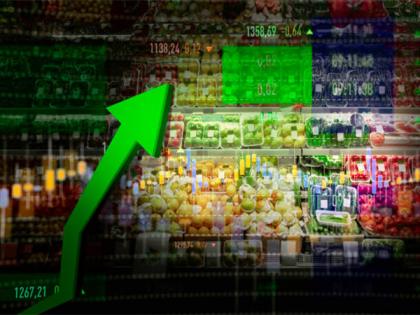Indian food processing industry to see CAGR of 12.5%, to USD 700 billion by 2030: Report
By ANI | Updated: June 25, 2025 18:43 IST2025-06-25T18:37:19+5:302025-06-25T18:43:43+5:30
New Delhi [India], June 25 : The Indian food processing industry is projected to grow at a compound annual ...

Indian food processing industry to see CAGR of 12.5%, to USD 700 billion by 2030: Report
New Delhi [India], June 25 : The Indian food processing industry is projected to grow at a compound annual growth rate (CAGR) of 12.5 per cent from 2023 till 2030, to USD 700 billion from USD 389 billion in 2025, according to a report by RUBIX.
The report further adds that this expansion was attributed towards a combination factors such as proactive government initiatives, evolving consumer lifestyles, and a wave of product innovations across the sector.
Additionally, India's robust agricultural foundation provides a strong base for this growth, with the country being the largest producer of milk, millets, pulses, and rice globally.
The food processing industry's contribution to India's economy is substantial, accounting for approximately 8.80 per cent of manufacturing Gross Value Added (GVA) and 8.39 per cent of agriculture GVA in 2024. It also represents 13 per cent of total exports and 6 per cent of overall industrial investments.
Government support has been instrumental in this growth. Initiatives like the Pradhan Mantri Kisan SAMPADA Yojana (PMKSY), the Pradhan Mantri Formalisation of Micro Food Processing Enterprises (PMFME) Scheme, and the Production Linked Incentive Scheme for Food Processing Industry (PLISFPI) aim to bolster infrastructure, enhance quality standards, and attract investment. These initiatives include the establishment of Mega Food Parks, Agro-Processing Clusters, and cold chain infrastructure, significantly reducing post-harvest losses and improving efficiency.
The report also mentions that changing consumer preferences, particularly in urban areas, are also fuelling the industry's expansion. The rise of nuclear families and an increasing number of working women have led to a greater demand for convenience, hygiene, and variety in food, driving the consumption of ready-to-eat and packaged food options.
Digital innovations, such as AI, IoT, and blockchain, are further transforming the supply chain, improving quality control, tracking, and traceability.
Despite the positive trajectory, challenges remain, including a low level of processing for total agricultural output (less than 10 per cent) and significant food wastage. Addressing these issues and scaling up processing capabilities will be crucial for India to fully capitalize on its potential and emerge as a major global player in the food value chain.
Disclaimer: This post has been auto-published from an agency feed without any modifications to the text and has not been reviewed by an editor
Open in app